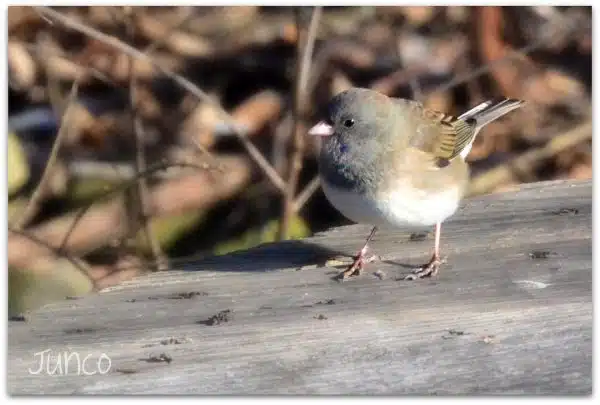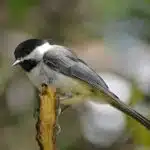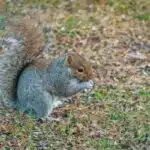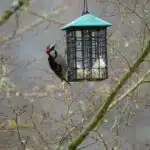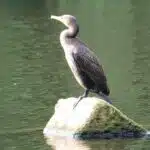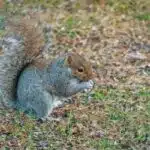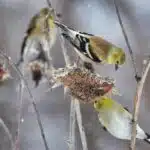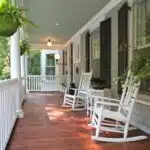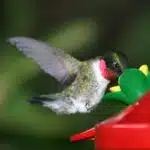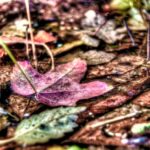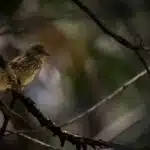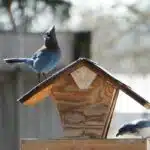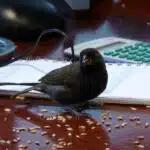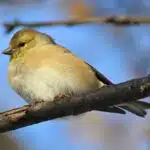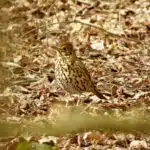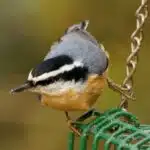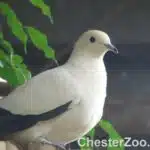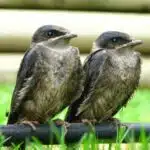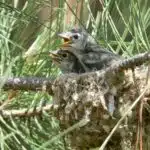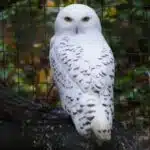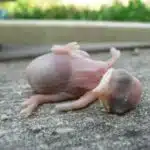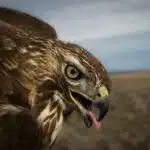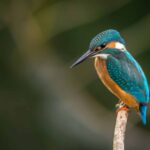The Junco bird is a common sight in many yards throughout North America during the winter months. These small, sparrow-like birds are known for their distinctive grey and white plumage, which makes them easy to identify. Despite their ubiquity, however, many homeowners struggle to attract Juncos to their yards. As a certified wildlife biologist with years of experience studying these birds, I have learned several effective strategies for luring Juncos to your property.
While there is no one-size-fits-all solution for attracting Juncos, there are several key factors that can increase the likelihood of these birds visiting your yard. Providing adequate food sources and shelter are essential components of any successful Junco-attracting strategy. Additionally, understanding the behavior patterns of these birds can be helpful in determining the best approach for enticing them to your property. In this article, I will share my expert insights on how to attract Juncos to your yard and help you create a welcoming environment for these charming winter visitors.
Understanding The Behavior Of Juncos
Winter is a harsh season for many bird species, but the junco has adapted well to the cold. These small birds are known for their grayish-brown backs and white bellies, making them easy to spot in the snow. Understanding winter behavior is crucial when attracting juncos to your yard, as they prefer areas with ample food sources and shelter from the elements. Juncos are also known for their unique mating habits, which involve males performing courtship displays such as singing and flapping their wings.
As a certified wildlife biologist, it’s important to note that juncos are typically ground feeders that prefer seeds and insects. During the winter months, they often form flocks with other birds in order to increase their chances of finding food. Providing a variety of bird feeders and seed options can help attract juncos to your yard. Additionally, offering nesting materials such as twigs and grasses can provide shelter during the colder months.
Understanding the behavior of juncos is essential when attracting them to your yard. By providing ample food sources and shelter from the elements, you can create an inviting environment for these small birds. The next section will explore how identifying different types of juncos can further enhance your efforts in bringing these feathered friends into your yard.
Identifying The Different Types Of Juncos
The American Junco (Junco hyemalis) is a small sparrow found in North America, ranging from Alaska to Guatemala. The Dark-eyed Junco (Junco hyemalis) is a species of the American Junco, distinguished by its darker plumage and stronger bill. The Slate-colored Junco (Junco hyemalis) is another species of the American Junco, known for its slate-grey coloration on the back and wings. It is the most common junco found east of the Rockies. All three species of junco can be attracted to a yard by providing a variety of seed, especially black oil sunflower, and nesting boxes. Additionally, providing a water source, such as a birdbath, will also increase the likelihood of junco sightings.
American Junco
As a certified wildlife biologist, I can attest that the American Junco is a fascinating bird species to observe in your yard. Commonly referred to as the “snowbird,” it is a small sparrow-like bird with distinct markings of dark gray or black on its head and back, and white or light gray on its belly. Understanding their migration patterns and nesting habits is crucial in attracting them to your yard.
Juncos are migratory birds that breed in northern regions during the summer months before migrating southward during the fall. To attract juncos to your yard, providing food sources such as seeds, nuts, and berries can be beneficial for those stopping by during their migration period. Additionally, planting native vegetation can provide shelter for juncos while they rest and refuel.
While juncos typically nest on the ground, providing low shrubs or bushes for them to build nests in can increase their likelihood of staying in your yard for an extended period. It’s important to ensure that these areas are protected from predators such as cats or dogs. By understanding their behavior and needs, you can create a welcoming environment for American Juncos in your own backyard.
Dark-Eyed Junco
As a certified wildlife biologist, it is important to identify the different types of Juncos to understand their behavior and needs. One of the most common subspecies of Juncos is the Dark-eyed Junco. This bird species has a distinct appearance with a gray or black head and upper body and white or light gray belly. The variation in the coloration of their feathers depends on their geographic location.
The Dark-eyed Junco’s diet primarily consists of seeds, insects, and fruits during breeding season. During winter, they rely heavily on seeds for survival. To attract them to your yard, providing food sources such as sunflower seeds, cracked corn, and millet can be beneficial. Additionally, planting native vegetation can provide shelter for juncos while they rest and refuel.
While Dark-eyed Juncos typically nest on the ground in open areas such as meadows or forest clearings, they also use dense shrubs as nesting sites. Providing low shrubs or bushes for them to build nests in can increase their likelihood of staying in your yard for an extended period. It’s crucial to ensure that these areas are protected from predators such as cats or dogs by installing barriers or fencing around vulnerable areas. By understanding their behavior and needs, you can create a welcoming environment for Dark-eyed Juncos in your own backyard.
Slate-Colored Junco
As a certified wildlife biologist, identifying the different types of Juncos is essential in understanding their behavior and environmental preferences. Another type of Junco that is worth noting is the Slate-colored Junco. This subspecies has a slate-gray head and upper body with a lighter gray or white underside. They are commonly found in coniferous forests and mountainous regions.
Slate-colored Juncos have distinct behavior patterns, which include nesting on the ground in areas with dense vegetation. They also forage for seeds, insects, and berries on the forest floor. In winter, they tend to be more solitary compared to other subspecies of Juncos. Understanding these behavior patterns can help homeowners create a suitable environment for them.
To attract Slate-colored Juncos to your yard, planting native vegetation such as evergreen trees and shrubs can provide shelter and nesting sites for them. Additionally, providing food sources such as sunflower seeds, thistle seed, or suet can be beneficial during winter when natural food sources may not be readily available. It’s crucial to ensure that these areas are protected from predators by installing barriers or fencing around vulnerable areas.
By identifying the different types of Juncos such as Dark-eyed and Slate-colored Junco and understanding their behavior patterns and environmental preferences, homeowners can create a welcoming environment that supports their needs throughout the year. Providing food sources, planting native vegetation, and protecting vulnerable areas are all excellent ways to attract these birds to your yard while ensuring their safety and survival.
Providing Adequate Food Sources
Identifying different types of juncos is essential before attracting them to your yard. Once you are familiar with their physical characteristics and behavior, you can provide them with suitable food sources. Juncos are primarily ground feeders, and they prefer seeds over other food options. So, it’s crucial to have a variety of seed types available in your yard.
Feeder placement is one of the key factors that determine the success of attracting juncos. You should place feeders in an open area where juncos can easily access them. Also, make sure that the feeders are at least five feet above the ground to protect them from predators. During winter months when food becomes scarce, offering seasonal offerings such as suet cakes and mealworms can be beneficial.
Offering a variety of seeds and feeders is crucial for attracting juncos to your yard. You can offer millet, sunflower seeds, and cracked corn in hopper or tube feeders. Platform feeders are also suitable for providing mixed seeds and nuts. Additionally, scattering seeds on the ground can attract juncos as they prefer feeding on the ground. Keep in mind that it takes time for juncos to find your feeding stations; therefore, patience is key when trying to attract these birds to your yard.
Offering A Variety Of Seeds And Feeders
As a wildlife biologist, I have observed that juncos are attracted to various seed types and feeder designs. Offering a variety of seeds can attract a diverse range of bird species, including juncos. Juncos prefer to feed on black oil sunflower seeds, but they also enjoy eating cracked corn, millet, and nyjer seeds. Therefore, it is recommended to offer a mix of these seeds in your bird feeder.
Feeder design is another crucial factor in attracting juncos to your yard. Juncos typically prefer feeding on platform or tray feeders that are close to the ground rather than hanging feeders. Platform feeders provide enough space for multiple birds to feed at once and reduce competition between birds. Additionally, the tray design allows for easy cleaning and maintenance.
Incorporating different feeder designs and seed types can help attract juncos to your yard; however, it is important to note that providing shelter can also be beneficial for their survival. In the subsequent section, we will discuss how adding shelter for protection can create a safe environment for juncos and other bird species in your yard.
Adding Shelter For Protection
Offering a variety of seeds and feeders is a great way to attract juncos to your yard. However, it’s not enough to keep them coming back. Providing shelter is equally important for the survival of birds. DIY shelter ideas are abundant and easy to implement in your yard.
One benefit of providing shelter for birds is that they have a place to hide from predators and harsh weather conditions. It also provides them with a safe spot to build their nests during breeding season. Additionally, providing shelter can help reduce stress on the birds, allowing them to conserve energy and focus on finding food.
There are many DIY shelter ideas available online that you can easily make at home using recycled materials such as wood scraps or old containers. One idea is to create a brush pile by collecting fallen branches and leaves in a corner of your yard. Another option is to hang birdhouses or nesting boxes in trees or on poles. Whatever type of shelter you choose, make sure it’s secure and stable enough to withstand strong winds and heavy rain.
Transitioning into the subsequent section about tips for choosing the right bird seed, it’s important to note that providing food alone won’t guarantee the survival of birds in your yard. Combining it with shelter will create an environment that promotes their overall wellbeing. With this in mind, let’s discuss how you can choose the best bird seed for juncos and other backyard birds.
Tips For Choosing The Right Bird Seed
As someone who has dedicated their life to the study of wildlife, I find it amusing that we as humans have become so invested in attracting birds to our backyards. After all, we have taken away so much of their natural habitat, it only seems fair that we do what we can to make up for it. In order to successfully attract juncos, one must start with seed selection.
When choosing birdseed for juncos, it is important to note that they are primarily ground-feeders. This means that they prefer seeds that have fallen from a feeder or those scattered on the ground. Popular choices include millet and black oil sunflower seeds. Make sure to avoid seed blends with fillers such as corn or wheat.
Once you have selected the right seed blend, placement of your feeders is crucial. Juncos are naturally skittish and prefer areas where they can quickly retreat if necessary. Place your feeder near shrubs or trees but not too close that predators can easily access them. Remember, creating a bird-friendly environment is more than just putting out a feeder – it’s about providing a safe space for them to thrive in their natural habitat.
Transitioning into creating a bird-friendly environment, there are several steps you can take beyond just selecting the right seed and feeder placement.
Creating A Bird-Friendly Environment
To attract juncos to your yard, it is important to create a bird-friendly environment. This involves providing the necessary resources for birds to thrive, such as food, water, and shelter. Landscaping is an important aspect of creating a bird-friendly environment. Choose native plants that provide food and shelter for birds throughout the year. Consider planting bushes and trees that produce berries or fruit in the fall and winter when other food sources are scarce.
Nesting boxes are another important feature to include in your yard if you want to attract juncos. These boxes provide a safe place for birds to raise their young away from predators. Make sure the nesting boxes are placed in a secure location that is protected from harsh weather conditions. Additionally, be sure to clean out the nesting boxes after each breeding season to prevent the spread of disease.
To draw your audience in and keep them interested in creating a bird-friendly environment, consider incorporating these nested bullet point lists:
- Landscaping ideas for attracting juncos:
- Plant native shrubs and trees
- Provide cover with evergreen plants
- Include hanging baskets filled with seeds
- Tips for building nesting boxes:
- Use untreated wood or recycled plastic
- Place ventilation holes on opposite sides of the box
- Add predator guards around the entrance hole
- Ways to make your yard safer for birds:
- Keep cats indoors or use cat-proof fencing
- Avoid using pesticides and herbicides
- Clean feeders regularly to prevent disease transmission
Overall, creating a bird-friendly environment involves careful consideration of landscaping choices and providing adequate shelter through nesting boxes. By making small changes in your yard, you can help support local wildlife populations while also enjoying their presence.
As you continue to build a bird-friendly environment, consider adding water features to your yard. Providing access to water can offer numerous benefits for birds, including drinking, bathing, and cooling off on hot days.
The Benefits Of Water Features
Creating a bird-friendly environment is a great way to attract different bird species into your yard. A perfect example of this is the case of Mr. and Mrs. Johnson, who implemented several bird-friendly practices in their garden, such as planting native trees and shrubs, providing food, and creating nesting habitats. As a result, they were able to attract juncos and other birds into their yard.
DIY water features are also an effective way of attracting birds into your yard. Birds need water for drinking and bathing purposes, and having a source of water can help create the perfect habitat for them. Bird baths are an excellent choice for providing water to birds, as they keep them clean and safe from predators.
In addition to attracting birds into your yard, providing water through DIY water features like bird baths has many benefits for both the birds and the environment. Water sources can help maintain biodiversity by serving as habitats for aquatic organisms such as insects and amphibians. They also help mitigate heat stress during hot days by providing a cool place where birds can dip in and refresh themselves.
Understanding the role of migration is crucial when it comes to creating a sustainable bird-friendly habitat in your garden. Migratory birds travel long distances between breeding grounds and wintering areas, making pit-stops along the way to rest and refuel on food resources. By providing food, water sources like bird baths or other DIY water features, shelter and nesting habitats in your yard throughout the year, you can support these fascinating creatures’ journey while enjoying their presence in your backyard all year round.
Understanding The Role Of Migration
Migration patterns are an essential aspect of the biological cycle of bird species such as juncos. Juncos are migratory birds that breed in the northern regions and migrate to southern areas during winter. These birds travel thousands of miles in search of better food resources, environmental conditions, and breeding opportunities. Migration patterns are influenced by various factors such as weather changes, day length, and food availability.
Environmental factors play a crucial role in the migration pattern of juncos. These factors can include temperature fluctuations, precipitation levels, and the availability of food sources. The presence of natural resources like water sources and vegetation cover can also impact migration patterns. As a result, it is essential to create an environment that attracts juncos by providing adequate nourishment and shelter to meet their needs throughout their journey.
If you want to attract juncos to your yard, here are some tips to consider:
- Plant native trees and shrubs that provide food sources for juncos.
- Install bird feeders with seeds preferred by juncos.
- Create a water source such as a birdbath or fountain.
- Minimize pesticide use in your yard to maintain a healthy insect population for birds.
Understanding the migration patterns and environmental factors that influence bird behavior is critical for wildlife biologists seeking to protect endangered species’ populations like the junco bird. Creating an environment that caters to these birds’ needs can help preserve their habitat while allowing them to thrive naturally without interference from human activities or external threats.
Transitioning into preventing bird window collisions: To ensure these birds’ survival during migration season, it’s essential to take steps to prevent bird-window collisions caused by reflective surfaces on windows or buildings.
Preventing Bird Window Collisions
Understanding the role of migration is crucial in bird conservation efforts and attracting certain species to your yard. However, it’s important to also consider the safety of these birds while they are in your yard. Preventing collisions with windows is one of the most significant threats to birds, especially during migration.
One effective way to prevent bird window collisions is by using decals or other visual markers on the glass. Decals can be placed on either the outside or inside of the window and should be spaced no more than 4 inches apart horizontally and 2 inches apart vertically. These markers help birds recognize that there is a barrier and avoid flying into it.
It’s also important to note that not all decals are created equal. Research has shown that certain patterns, such as those with UV-reflective qualities or those that mimic spider webs, are more effective at preventing collisions than others. Before purchasing decals, it’s important to do some research and choose ones that have been tested and proven effective. By taking steps to prevent collisions, we can ensure that our yards remain safe havens for migratory birds as they travel through our neighborhoods.
Transition: While preventing collisions is crucial for attracting birds to your yard during migration, managing predators can also play a role in creating a safe environment for these feathered visitors.
Strategies For Managing Predators
Predator proofing strategies are essential when trying to manage predators around your yard. For instance, one of the most effective ways of deterring predators is by constructing predator-proof structures such as mesh-wire fences or enclosing your bird feeders in a cage. These structures keep out larger predators like raccoons and squirrels while still allowing smaller birds like juncos to access the feeders.
Another predator proofing strategy is the use of natural predator deterrents. This involves using things like water sprayers or alarms that emit loud noises when triggered by predators. Alternatively, you can also plant specific plants around your yard that act as natural deterrents to predators. Examples include prickly bushes like holly and barberry, which deter both large and small predators alike.
In conclusion, managing predators in your yard requires a combination of both structural measures and natural predator deterrents. By using these strategies, you can effectively protect your juncos from harm while still maintaining their accessibility to food sources. In the subsequent section, we will explore some tips on how to maintain your bird feeders so that they continue to attract juncos and other birds alike.
Maintaining Your Bird Feeders
As a certified wildlife biologist, it is important to understand the intricacies of attracting juncos to your yard. Symbolically speaking, bird feeders are like restaurants for birds. Just as diners avoid dirty or moldy establishments, birds will not return to feeders that are not clean and well-maintained. To attract juncos, be sure to clean your feeders regularly and prevent mold growth by avoiding wet or damp seed.
In addition to maintaining clean feeders, squirrel proofing techniques and deterrents can be used to prevent unwanted visitors from stealing food intended for the juncos. Squirrels are notorious for raiding bird feeders, often causing damage in the process. Effective squirrel proofing methods include using baffles or cages around the feeder and placing it on a pole that is difficult for squirrels to climb.
Another common mistake when trying to attract juncos is placing feeders too close together. While it may seem convenient to have all your feeders in one spot, this can actually deter some birds from visiting. Instead, space out your feeders throughout your yard and provide different types of food (such as suet and mealworms) at each location.
To ensure a successful junco habitat in your yard, remember to practice good feeder hygiene by cleaning them regularly and preventing mold growth. Additionally, implement effective squirrel proofing techniques and avoid clustering all of your feeders together in one area. By following these tips you will create an inviting environment for juncos while also deterring unwanted visitors from taking advantage of their food source.
Common Mistakes To Avoid
Common Mistakes to Avoid:
As a certified wildlife biologist, it’s essential to understand the common mistakes that people make when trying to attract juncos to their yard. One of the most significant errors is not providing enough cover and shelter for these birds. Juncos prefer areas with shrubs, bushes, and trees where they can hide from predators and adverse weather conditions. Without adequate cover, these birds are less likely to visit your yard.
Another mistake is failing to provide enough food sources for juncos. These birds primarily feed on seeds and insects, so it’s crucial to have a variety of plants that produce seeds throughout the year. Providing bird feeders filled with seeds is also an excellent way to supplement their diet. However, be sure not to overfill the feeders as this can attract unwanted pests.
Finally, another common mistake is not maintaining a clean environment in your yard. Juncos are attracted to areas that are clean and free of debris. This means regularly removing fallen leaves, branches, and other clutter from your yard. Cleaning bird feeders regularly is also important as moldy or spoiled food can harm these birds.
Tips for Success:
To successfully attract juncos to your yard, there are several tips you should follow. First, ensure that your yard has sufficient cover and shelter for these birds. Planting native shrubs and trees around your property can provide an excellent habitat for them.
Secondly, providing a variety of seed-producing plants throughout the year will help keep the juncos well-fed and happy in your yard. Additionally, keep bird feeders filled with fresh seed but avoid overfilling them.
Lastly, keeping your yard clean by removing debris regularly will help create an attractive environment for juncos.
Transition:
Observing juncos in their natural habitat provides valuable insights into their behavior and preferences. By understanding how they interact with their environment, we can better design our yards to attract and support these beautiful birds.
Observing Juncos In Their Natural Habitat
Despite our best efforts, it can be difficult to attract juncos to our yards. However, observing their behavior in their natural habitat can provide valuable insights into their preferences and habits. By understanding these factors, we can create an environment that is more likely to attract these beautiful birds.
One of the most important aspects of observing juncos is understanding their habitat preferences. Juncos are ground feeders, and they prefer areas with dense vegetation where they can find a variety of seeds and insects. They also like areas with open space where they can forage for food without being disturbed by predators or other animals.
Another important factor to consider when observing juncos is their behavior. Juncos are social birds that typically live in flocks, so if you see one junco in your yard, there may be others nearby. They are also very active and busy birds that spend much of their time foraging for food or engaging in other activities like preening or bathing.
Observing the behavior and habitat preferences of juncos can be a rewarding experience that not only helps you attract these beautiful birds to your yard but also deepens your appreciation for the natural world around you. By creating an environment that meets their needs and observing them as they go about their daily lives, you can enjoy the beauty of these fascinating creatures up close and personal.
Conclusion: Enjoying The Beauty Of Juncos In Your Yard
To fully appreciate the beauty of juncos in your yard, there are several ways you can enhance your experience. First and foremost, provide a suitable habitat for these birds by offering food and shelter. Juncos prefer open areas with low vegetation and shrubs; consider planting native plants to provide a natural food source and cover.
Another way to appreciate juncos is through photography. These birds are known for their striking plumage, with dark gray or brown feathers on their back and wings, white bellies, and pink bills. To capture their beauty on camera, set up a bird feeder near a window or invest in a telephoto lens to get close-up shots of juncos perched on branches or hopping around on the ground.
Finally, take time to observe juncos in their natural habitat without disturbing them. Sit quietly outside or watch from indoors as they interact with each other and search for food. By appreciating these small birds, we can learn more about their behavior and contribute to conservation efforts that help protect them from threats such as habitat loss and climate change.
Conclusion
Juncos are fascinating birds that can brighten up any yard with their colorful feathers and playful behavior. As a certified wildlife biologist, I have studied the behavior of these birds extensively and have found that attracting them to your yard is not difficult if you understand their needs.
Firstly, it’s important to identify the different types of juncos that inhabit your area so you can provide adequate food sources. Offering a variety of seeds and feeders is also essential, as juncos have a diverse diet. Adding shelter such as bushes or trees can also provide protection from predators and harsh weather conditions.
Maintaining your bird feeders regularly is crucial to prevent the spread of diseases among birds. Avoid making common mistakes like placing feeders too close to windows or using pesticides in your garden. Observing juncos in their natural habitat can give you an idea of what they prefer in terms of food and shelter.
In conclusion, attracting juncos to your yard requires patience and understanding of their behavior. By offering a variety of seeds and feeders, providing shelter for protection, and maintaining your bird feeders properly, you can enjoy the beauty of these magnificent birds in your own backyard.
Image Credits
- “Bird – Junco” by blmiers2 (featured)

